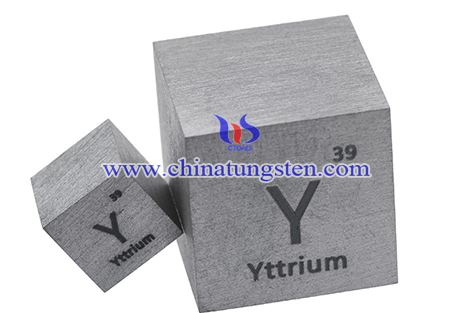Synthesis of Tungsten Powder Using Ammonium Paratungstate for Production of Cemented Carbide
- Details
- Category: Tungsten Information
- Published on Wednesday, 14 July 2021 05:00
WC-Co cemented carbide has widely used in machining, drilling, automotive, military, and aerospace owing to its excellent mechanical performances. Most research on cemented tungsten carbides with a cobalt binder (WC-Co cemented carbides) has focused on improving their strength, fracture toughness, and hardness.
It is well-known that the refinement of WC grain size in WC-Co cemented carbides to the sub-micrometer or nanometer scale can significantly improve their mechanical properties. Doping WC-Co with rare earth elements to refine their grain size and improve the mechanical properties of tungsten and its alloys is quite well studied. There have been several efforts to add small quantities of yttrium (Y) to W, WC, or their cemented carbides to improve their properties. These are considered intermediate or final products during the production of tungsten and its alloys. However, there have been very few studies that have focused on understanding the influence of Y on the raw materials for the preparation of tungsten. These raw materials include tungsten oxide, ammonium paratungstate (APT), and ammonium metatungstate (AMT).

To study the effect of yttrium (Y) during the hydrogen reduction behavior of tungsten oxide, Yttrium doped tungsten powder has been prepared using ammonium paratungstate for production of cemented carbide, the Y-doped w particles were obviously smaller than undoped W powder particles. The experimental procedures are as follows:
APT (particle size: 37.5 μm; purity: 99.97%) was used as the starting material to synthesis tungsten oxide (WO3). Y(NO3)3·6H2O that was easily soluble in water was used as the dopant. Following stoichiometric calculation, 1% yttrium (Y) was dissolved in suitable amounts of deionized water. Before drying at 80 °C in an oven, the solution was mixed with the corresponding amounts of APT. The pure and doped APT powders were then calcined at 600 °C for 2 h in a muffle furnace to remove organic salt components. The obtained W-Y composite oxide powders (3.0–4.0 g), were filled in an alumina ceramic boat of size 60 × 30 × 14 mm and were reduced to tungsten powders under a hydrogen atmosphere at 800 °C for 3 h in a tube reduction furnace. The samples were then cooled under hydrogen gas flow (dew point: −40 °C, flow rate: 0.4 m3/h). The two prepared tungsten powders were designated W and W-1%Y. These W-Y composite powders (12.0 g) were further mixed with 0.76 g carbon black (W and C molar ratio of 1:1) by dry ball milling in a planetary ball mill using agate balls as milling medium. The milling time was 2 h and the rotation speed was 200 r/min. Carbonization was carried out at 1400 °C for 2 h in a hydrogen atmosphere with subsequent cooling (to room temperature) in a H2 atmosphere. All heating rates were controlled at 5 °C/min.

In conclusion, yttrium doped tungsten powder has been prepared using ammonium paratungstate for production of cemented carbide, the Y-doped w particles were obviously smaller than undoped W powder particles. 1%Y-doped tungsten oxide consisted of WO3 phase and Y2WO6 phase. The reduction of Y-doped tungsten oxide was accomplished at 800 °C for 3 h. After reduction with hydrogen, Y-doped tungsten particles were remarkably smaller than undoped W powder particles, and yttrium barrier was observed in the cross-sectional morphology of 1%Y-doped tungsten powder.
- APT Manufacturer & Supplier, Chinatungsten Online: ammonium-paratungstate.com
- Tungsten News & Prices of China Tungsten Industry Association: www.ctia.com.cn
- Molybdenum News & Price: news.molybdenum.com.cn
- Tel.: 86 592 5129696; Fax: 86 592 5129797; Email: sales@chinatungsten.com



 sales@chinatungsten.com
sales@chinatungsten.com